Can island wildlife decimated by hunting and invasive rodents be reclaimed? If so, South Georgia in the Antarctic Polar region may be a model.
Captain James Cook is on record as being the first person to have actually set foot on South Georgia island (1775). Although there are reports of earlier sightings, Cook has the distinction of being the first voyager to disembark and walk around. He encountered the island on his second voyage (navigating on The Resolution), and spent three days there. He surveyed it and mapped it. After that, he claimed the land for England, named it after King George, and declared the bleak place was "not worth discovering." He was certain it would bring no value to anyone.
South Georgia Pintail Duck, Endemic to the Island
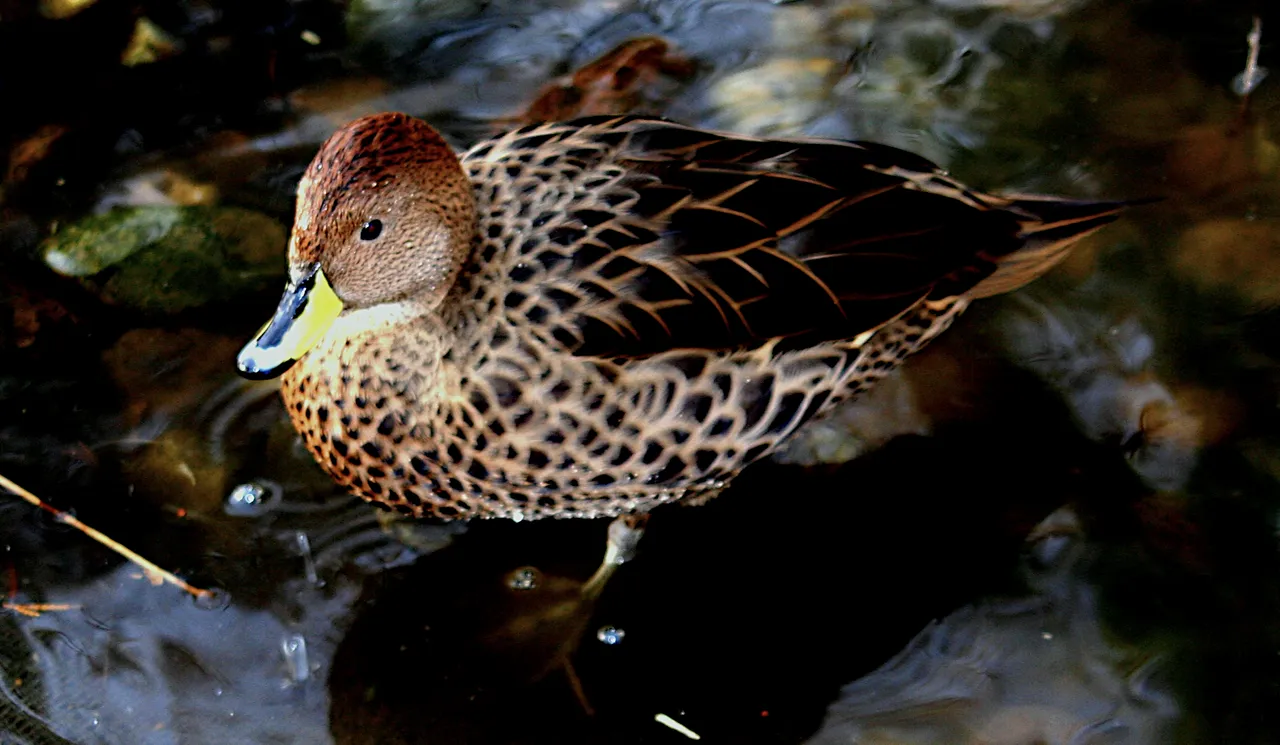
Credit: Sabine's Sunbird at English Wikipedia. Used under CC 3.0 license . When Captain Cook surveyed South Georgia, this is one of the animals he reported seeing.
Cook's report of seeing seals on the island belied his belief that the place would have no value. The report attracted the attention of sealers. Thirteen years after Cook dismissed the worth of South Georgia, the first seal hunter arrived on the island's shores. The seal industry took hold. It is estimated that between 1825 and 1912, 1.2 million seals were slaughtered in the industry's appetite for all things seal, including fur and oil. According to the PEW Charitable Trust, by that time the species was almost wiped out.
As the seal slaughter was depleting the species, another commercial enterprise was taking hold. In 1904 the first whaling station was established in the settlement of Grytviken on South Georgia. Between 1904 and 1965 that community saw an estimated 175,250 whales slaughtered.
The first whale species to be hunted on south Georgia were humpbacks. When this pool of marine mammals was exhausted, hunters moved further out to sea and pursued the blue whale.
Bluewhale Blowing
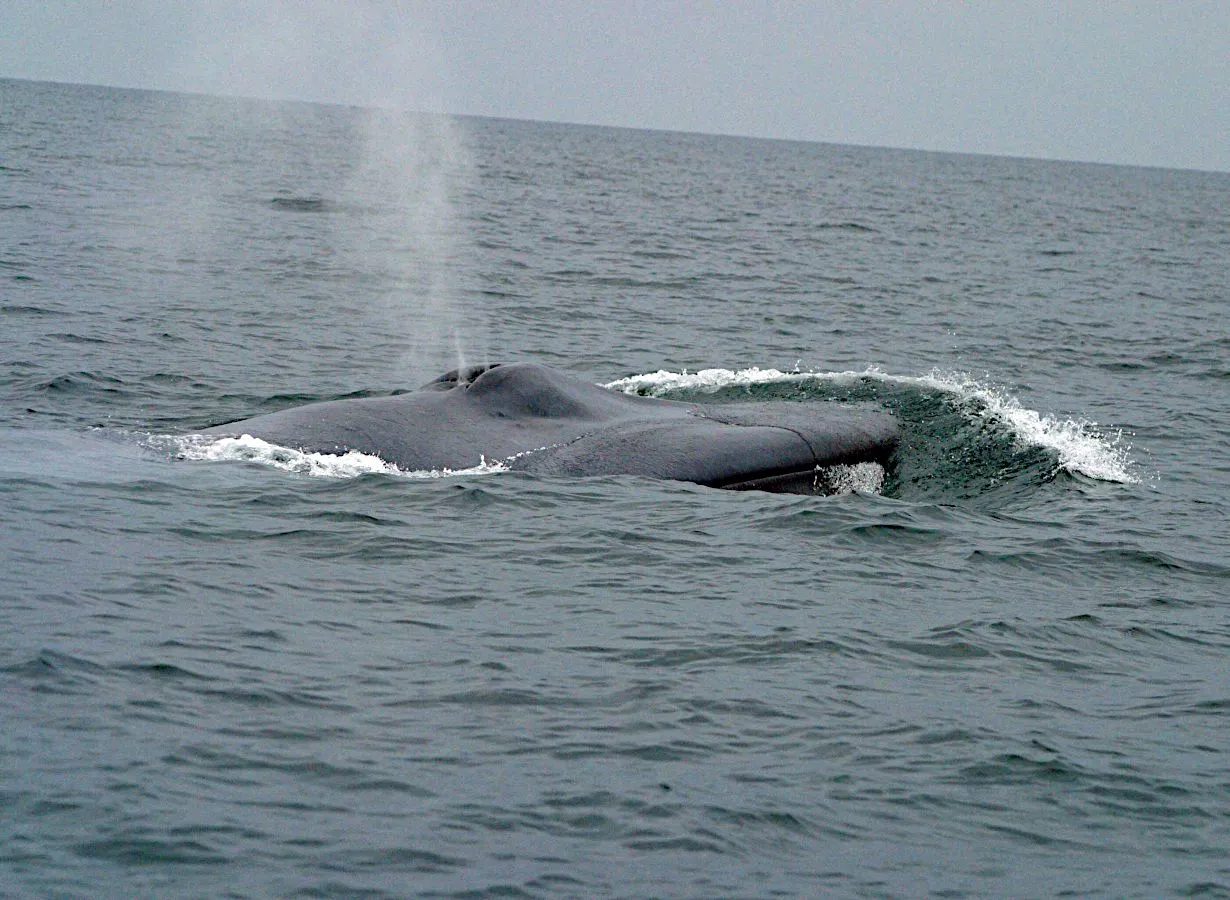
Credit: NOAA. Public domain.
Between 1904 and 1971, an estimated 42,698 blue whales were slaughtered in the waters off South Georgia. Blue whales were driven to near extinction there.
In 1965, the last blue whale was caught and slaughtered in South Georgia. While it is true that the decimation of whale and seal populations had a profound effect on the ecology of South Georgia, there were also other detriments to the ecology caused by human presence on the island.
Non-native plant species were introduced. Today, it is believed that 41 non-native species exist on South Georgia and that these threaten indigenous flora.
Reindeer were introduced (for the whalers to hunt!). But an even more destructive species was brought to South Georgia on whaling ships: rodents. The Norwegian brown rat, and mice, stowed away on the whalers. The rodents quickly adapted and found a rich food source in the eggs and chicks of ground-nesting birds.
Blue Petrel
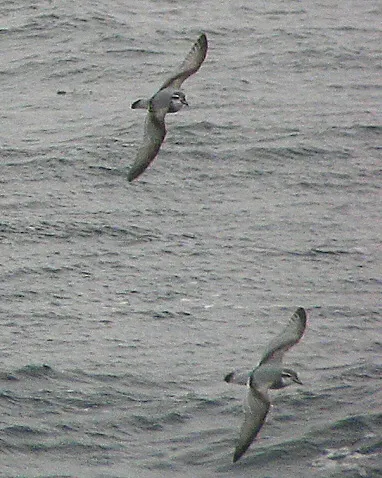
Credit: GeSHaFish. Used under a CC 3.0 license. These blue petrels were photographed in Antarctica. Because of rat predation, the blue petrel had stopped nesting in South Georgia.
Some areas of the island remained free from rat infestation because glaciers served as barriers. But, with global warming and the melting of glaciers, even those areas were threatened. Several bird species stopped coming to the island to breed.

Restoration of South Georgia
Reclaiming the natural habitat of South Georgia demanded a multi-pronged approach.
In 2012 the GSGSS, Government of South Georgia and South Sandwich Islands, established a Marine Protected Area around South Georgia.
A February 2020 survey of the waters revealed 58 blue whale sightings and 'numerous acoustic detections'. Blue whale recovery is taking longer than expected. One marine biologist suggests that so many whales were killed off that the species has lost 'cultural memory' of the waters as breeding grounds. This will take time to reestablish.
Humpback Whale and Calf
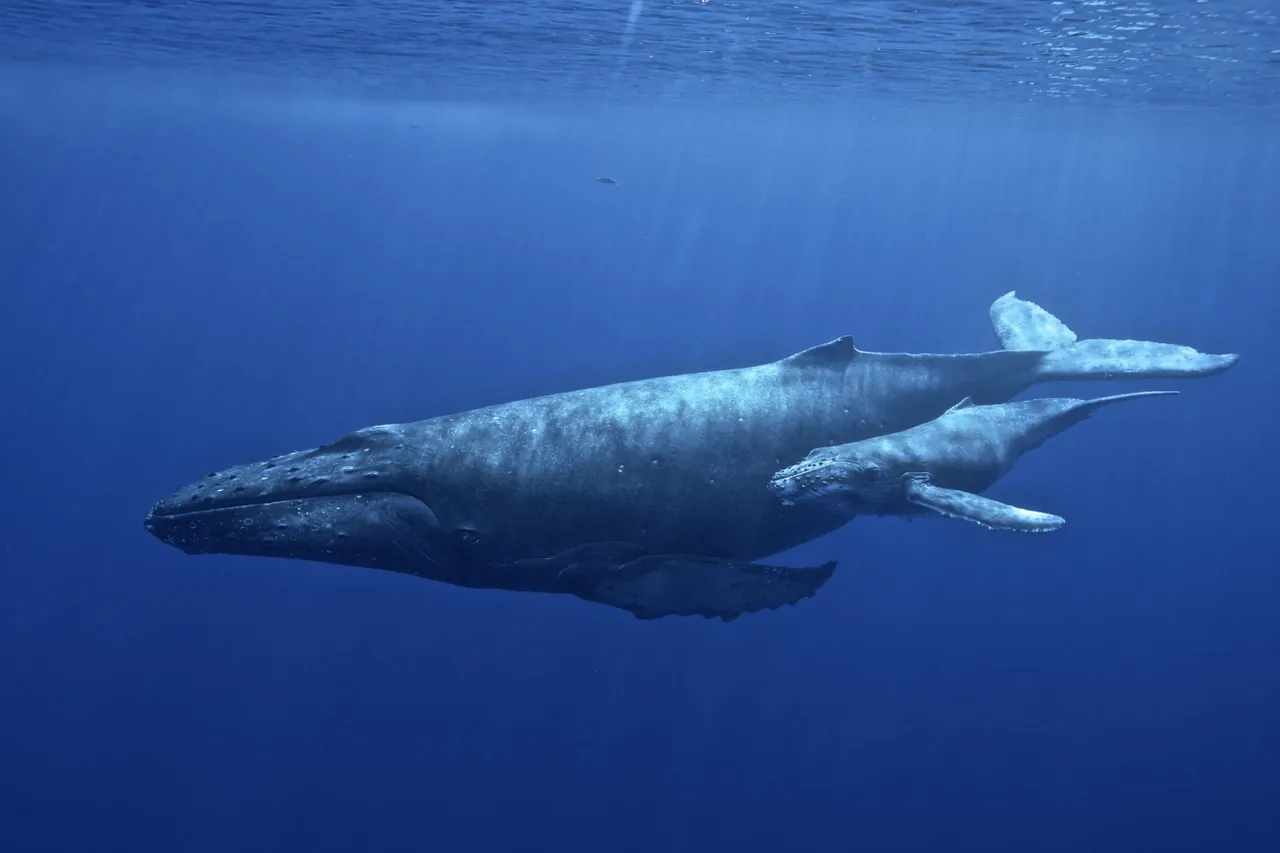
Credit: National Marine Santuaries. Public domain.
Humpback whales are showing stronger recovery. According to a survey conducted in 2019, the whales had returned to about 93% of their 'pre-exploitation' levels.

In 2011 the SGHT, South Georgia Heritage Trust, began a rat eradication program. It took several years for the Trust to drop approximately 300 metric tons of rat bait on the island. In 2013 and 2015 the organization repeated the drops. Subsequent surveys of the island (including the use of rat-sniffing dogs) have turned up no evidence of rodents. Monitoring will continue, however, on an ongoing basis.
South Georgia Pipit
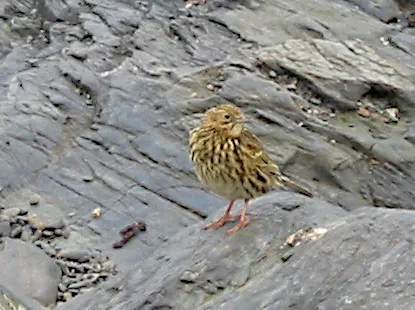
Credit: Ben Phalan, British Antarctic Survey. Used under CC 3.0 license.. The pipit breeds in tussock grassland. Previously, the bird was severely threatened by rodents because of its nesting habits.

In 2013 eradication of the reindeer began. A few of the reindeer were relocated. The rest were killed. Over several years of (humane??) slaughter, about 6,750 reindeer were slaughtered either by hunters or by other 'euthanistic' measures. In many cases, the meat was salvaged and sent abroad.
Reindeer on South Georgia Island Before Extermination
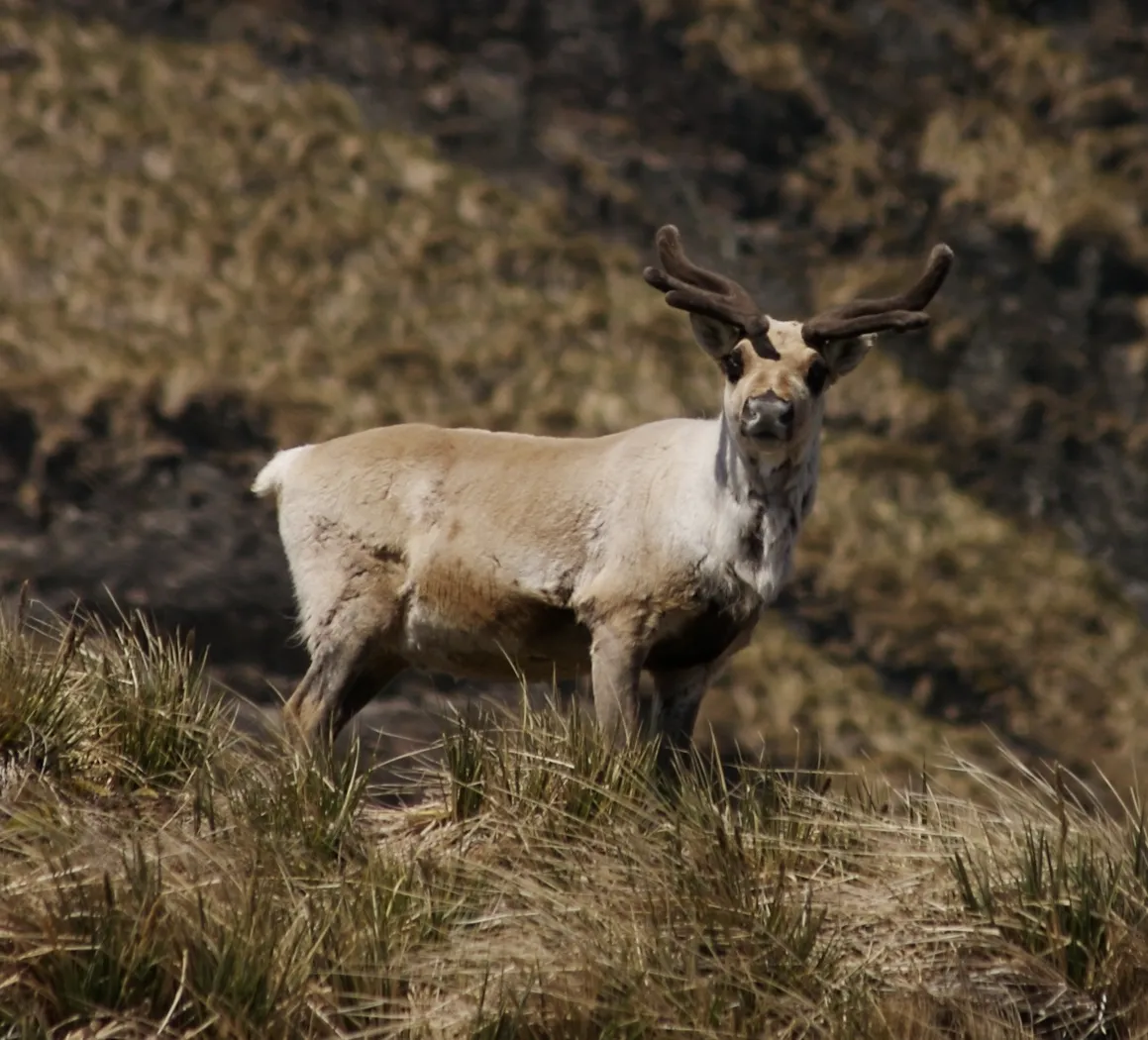
Attribution: Sydpolen at English Wikipedia. Used under CC 1.2 license.
Despite the extermination of reindeer from the island, South Georgia still sports a reindeer on its coat of arms.
Northern Giant Petrel (Macronectes halli), South Georgia
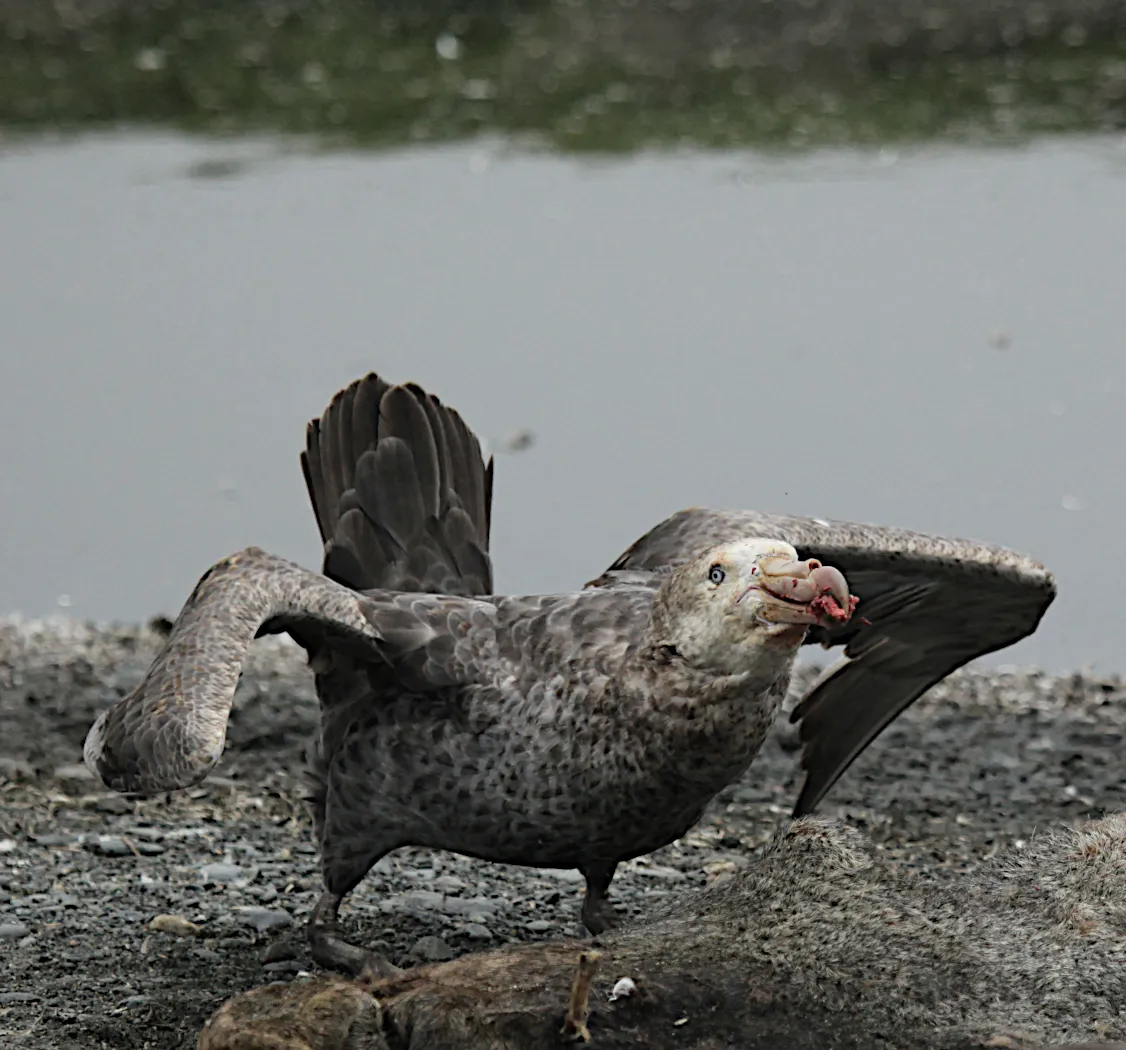
Credit: Liam Quinn from Canada. Used under CC 2.0 generic license. This aggressive omnivore earned the nickname Stinker. This is due not only to it's vulture-like diet--it feeds on carcasses--but also to its predilection for vomiting on anyone or anything it chooses. Its biogeographical realms are Antarctic, Australasian, Neotropical, Afrotropical, although the birds are most commonly found in South Georgia.

Conclusion
Is it possible to reclaim an ecology devastated by human action? Perhaps South Georgia is a model. However, certain circumstances on that island may render it unique. For one thing, it is an island, and therefore has certain natural barriers. For another, there are glaciers which form more barriers and helped to keep 'rat zones' separate. Finally, extreme measures were taken that might be not be politically viable in other circumstances. Killing almost 7000 reindeer might be unpalatable to some people.
This blog was inspired by a collage I made for the LMAC collage contest. I started reading about ground-nesting birds and came across the distinct challenges of South Georgia island.
Thank you for reading. I wish everyone, peace and health.
Postscript
The famous explorer Ernest Shackleton died aboard his boat Quest as it was anchored off the shore of South Georgia.

Accent Illustrations
- Shell
 @muelli from the LMAC, LIL, Image Library
@muelli from the LMAC, LIL, Image Library - Bird
 @yaziris from the LMAC, LIL, Image Library
@yaziris from the LMAC, LIL, Image Library
Selected Research Sources
https://www.smithsonianmag.com/smart-news/after-worlds-largest-rodent-eradication-effort-island-officially-rodent-free-180969039/
https://polarholidays.com/trips/falkland-islands-south-georgia-antarctica-15/
https://www.pbs.org/edens/southgeorgia/unique.html
https://www.pbs.org/edens/southgeorgia/unique.html
https://www.captcook-ne.co.uk/ccne/timeline/voyage2.htm
https://www.adventure-life.com/antarctica/south-georgia/articles/the-whalers-last-outpost
https://www.polartours.com/animals/south-georgia-pintail
https://www.pewtrusts.org/en/research-and-analysis/articles/2017/07/13/whaling-and-seal-hunting-defined-south-georgia-but-then-crashed
https://sght.org/sealing-archaeological-project/
https://www.int-res.com/articles/esr2020/43/n043p359.pdf
https://www.themarinediaries.com/tmd-blog/whale-of-fortune
https://deeply.thenewhumanitarian.org/oceans/community/2017/07/27/whales-seals-once-decimated-by-hunting-return-to-remote-islands
https://press.uchicago.edu/ucp/books/book/distributed/F/bo28561886.html
https://www.gov.gs/environment/eradication-projects/eradication-projectsreindeer/
https://sght.org/habitat-restoration/
https://www.cambridge.org/core/services/aop-cambridge-core/content/view/BC3E2CDA08575456EA235D0E92A41FB4/S003060531700028Xa.pdf/rodent-eradication-scaled-up-clearing-rats-and-mice-from-south-georgia.pdf
https://core.ac.uk/download/pdf/322534465.pdf
https://www.bas.ac.uk/project/building-data-resources-for-managing-the-south-georgia-south-sandwich-islands-marine-protected-area/
https://www.myvetcandy.com/newsblog/2020/11/19/blue-whales-return-to-south-georgia-after-near-extinction
https://www.sciencedirect.com/science/article/pii/S0967064522000595
https://www.science.org/content/article/rat-begone-record-eradication-effort-rids-sub-antarctic-island-invasive-rodents
https://www.atlasobscura.com/articles/how-to-exterminate-rats-on-an-island
https://www.oiseaux-birds.com/card-south-georgia-pipit.html
https://www.gov.gs/environment/eradication-projects/eradication-projectsreindeer/
http://datazone.birdlife.org/species/factsheet/northern-giant-petrel-macronectes-halli/text
https://www.coolantarctica.com/Antarctica%20fact%20file/wildlife/giant_petrels.php
https://www.arcgis.com/apps/View/index.html?appid=91f12145f2dc4ffc88509bcefb695326
https://animalia.bio/northern-giant-petrel
https://www.rmg.co.uk/stories/topics/shackletons-death-legacy
